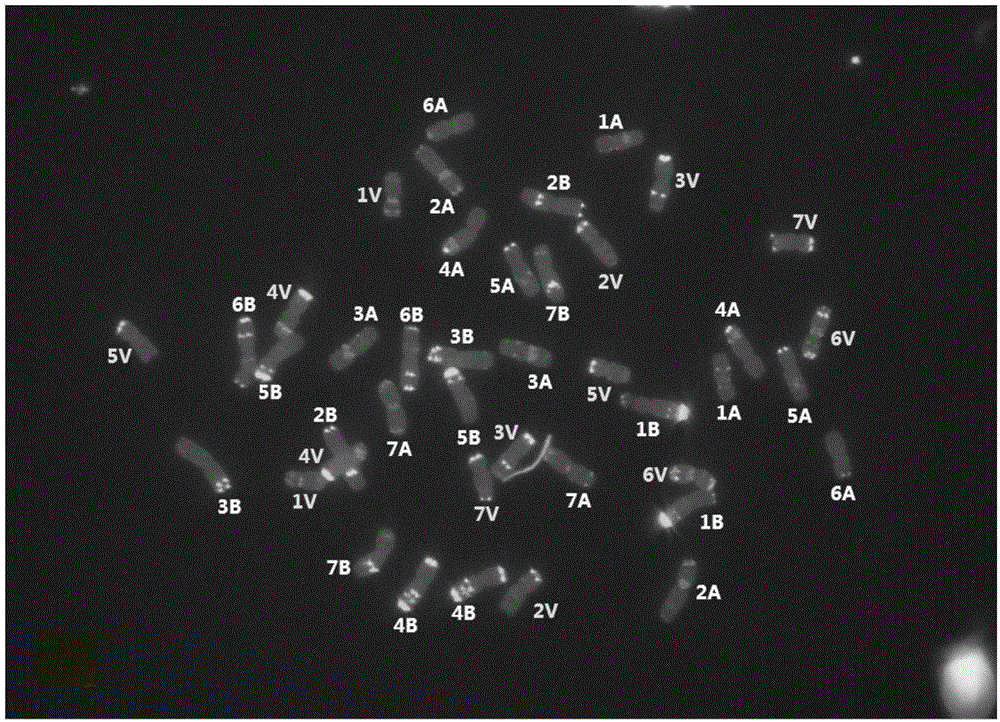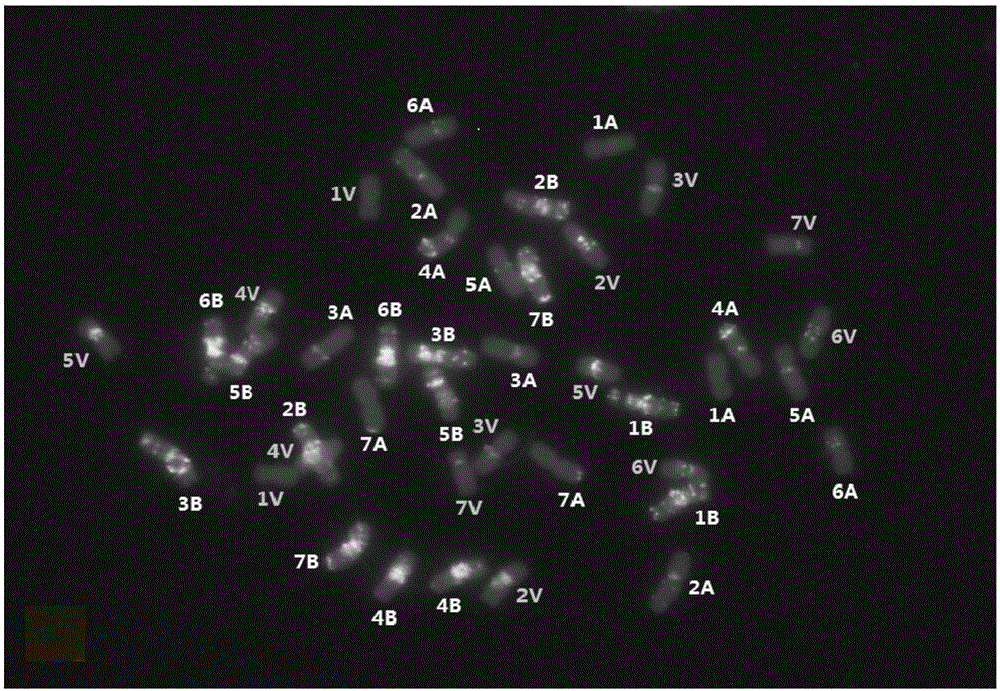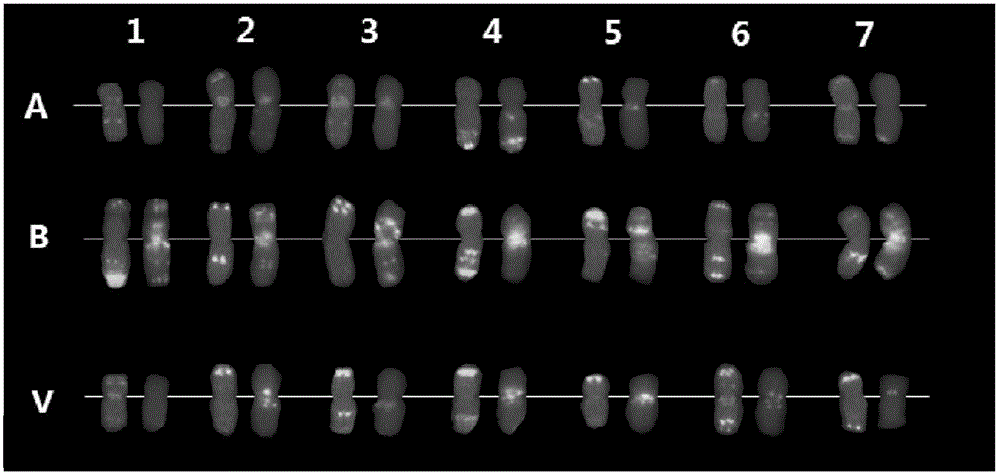Nucleic acid probes for identifying haynaldia villosa chromosomes and application thereof
A technology of nucleic acid probes and wheat tufts, applied in the field of chromosome engineering, to achieve the effects of saving time, labor and cost, being fast, accurate and cost-effective, and accelerating the breeding process
- Summary
- Abstract
- Description
- Claims
- Application Information
AI Technical Summary
Problems solved by technology
Method used
Image
Examples
Embodiment 1
[0050] Design and preparation of embodiment 1 Oligo sequence probe
[0051] According to the genome sequence of the T. villosa chromosome and the reported repetitive sequences diffusely distributed on the T. villosa chromosome, the 60bp Oligo sequence C1-10-5 and the Oligo sequence C1-10-6 were obtained after screening using BLAST and RepeatMasker software , was synthesized by Invitrogen, and the fluorophore 4-methyl-6-carboxyrhodamine was respectively connected to the 5' ends of the two sequences to obtain Oligo probe C1-10-5 (that is, the present invention Nucleic acid probe 1) and Oligo probe C1-10-6 (ie nucleic acid probe 2 of the present invention). Wherein, the nucleotide sequences of Oligo sequence C1-10-5 and Oligo sequence C1-10-6 from the 5' end to the 3' end are shown in SEQ ID NO.1 and SEQ ID NO.2 in the sequence table.
Embodiment 2
[0052] Fluorescence in situ hybridization verification experiment of embodiment 2 tuft wheat chromosome
[0053] (1), get the root of the durum wheat-Tutritus villosa amphidiploid TH1W (2n=42, AABBVV):
[0054] 1) Put the seeds on wet filter paper and incubate at 23°C for 24h.
[0055] 2) Transfer the seeds to culture at 4°C for 24 hours.
[0056] 3) Transfer the seeds to culture at 23°C until they root.
[0057] 4) When the root length reaches 1-2 cm, take the root and place it in a moistened 0.5ml EP tube (the EP tube is placed on ice). The 0.5ml EP tube should be poked a small hole with a diameter of about 3mm in advance to facilitate the treatment of the root tip with nitrous oxide.
[0058] 5) Put the EP tube with the root into the nitrous oxide tank, and pass the nitrous oxide (0.9Mpa) through the nitrous oxide tank for 2 hours.
[0059] 6) Take out the EP tube and place it on ice, add 90% acetic acid into it, and fix the root tip for 8-10 min. with ddH 2 O wash th...
PUM
 Login to View More
Login to View More Abstract
Description
Claims
Application Information
 Login to View More
Login to View More - R&D
- Intellectual Property
- Life Sciences
- Materials
- Tech Scout
- Unparalleled Data Quality
- Higher Quality Content
- 60% Fewer Hallucinations
Browse by: Latest US Patents, China's latest patents, Technical Efficacy Thesaurus, Application Domain, Technology Topic, Popular Technical Reports.
© 2025 PatSnap. All rights reserved.Legal|Privacy policy|Modern Slavery Act Transparency Statement|Sitemap|About US| Contact US: help@patsnap.com



